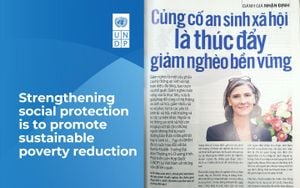A three-stage methodology for analyzing market concentration and efficiency among airports within the Yangtze River Delta has been proposed, aiming to improve regional transport and operational performance.
With the growth of ground transport systems, airports are facing increasing competition, leading to the establishment of airport groups to bolster collaboration and efficiency. This study focuses on the dynamics between competition and collaboration, investigating the passenger market concentration and operational efficiency within China’s Yangtze River Delta (YRD) airport group from 2011 to 2019.
The research outlines the three-stage method combining analytical methodologies and Data Envelopment Analysis (DEA), stemming from the need to seek advantageous connections between airport rivalry and collaboration. The method begins with the application of evaluative approaches, including Hirschmann-Herfindahl Index, Gini Index, and net-shift effects analysis, followed by the utilization of the super-efficiency DEA model.
A notable finding disclosed by the researchers indicates the YRD airport group registered moderate concentration levels but exhibited signs of decentralization over the study period. "The YRD airport group was moderately concentrated and had a decentralized trend from 2010 to 2019," the study states. Interestingly, around half of the analyzed airports maintained efficiency scores below one, simultaneously seizing significant market shares amid competition.
Importantly, the study reveals there is "a significant positive correlation between market share and airport efficiency, whereas Net shift is only negatively correlated with airports gaining market share." This intertwined relationship highlights how passenger market dynamics are influencing operational strategies at each airport.
The analyzed data reveal substantial shifts within the airport group, emphasizing the high concentration levels across major airports. The dominant Shanghai Pudong Airport, for example, accounted for 31% of passenger throughput as of 2013, though this figure dropped to 29% by 2019, signaling potential market adjustments and increased competition.
The research effectively utilizes the super-efficiency DEA model to analyze operational efficiency, showcasing varied success among the ten major airports. While Shanghai Pudong and Hongqiao airports achieved the highest efficiency scores within the group, certain smaller airports demonstrated rapid efficiency improvements, driven by both infrastructure expansions and heightened passenger demand.
Despite efficiency advancements, operational challenges persist due to overlapping market dynamics among regional competitors. The results elucidate the necessity for airport authorities to leverage quantitative analyses and research insights when developing strategies to utilize their competitive strengths and improve operational efficiencies.
Overall, the integration of shift-share analysis along with the DEA model paints a comprehensive picture of market dynamics and efficiency trends among the YRD airports. This study sheds light on operational benchmarks and suggests potential paths for policy development to optimize airport operations and market strategies moving forward.
Future research should continue to explore these complex interactions, taking care to incorporate external economic influences such as the expansion of high-speed rail networks, as these factors increasingly influence airport efficiency and market competition.



